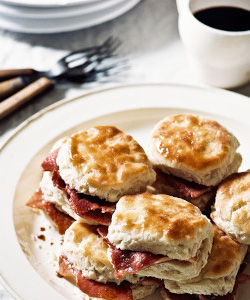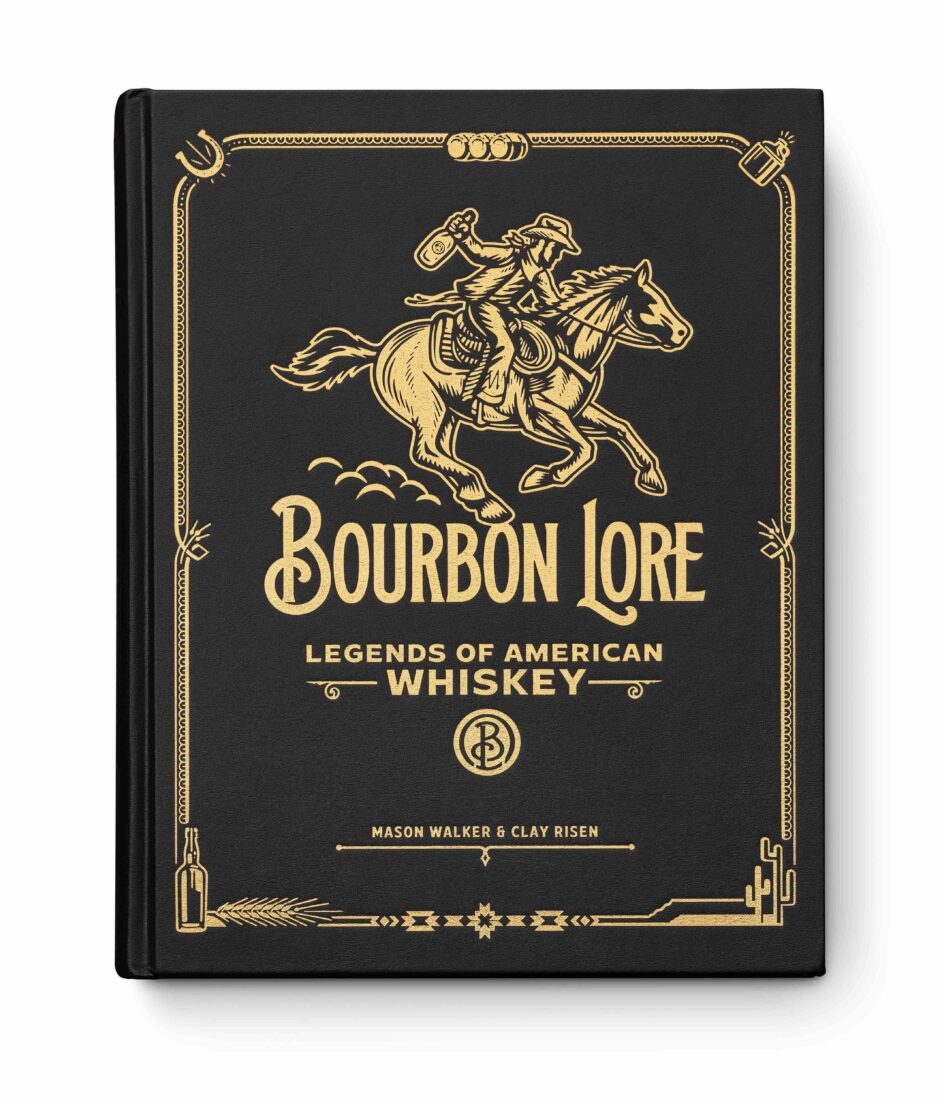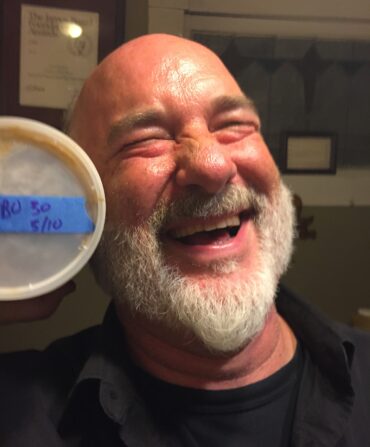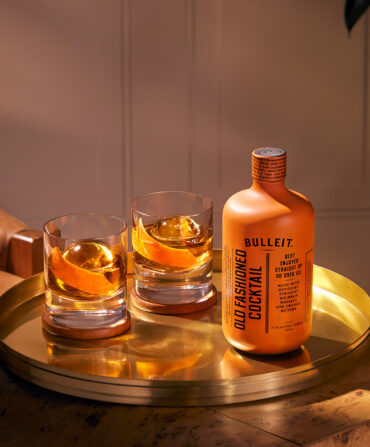
Clay Risen already had a pretty good gig as the New York Times’s resident whiskey writer and author of four previous books about whiskey, including the authoritative American Whiskey, Bourbon and Rye: A Guide to the Nation’s Favorite Spirit. Now Risen, who is descended from Kentucky farmers and grew up in Nashville, has joined forces (and bottle stashes) with notable whiskey collector Mason Walker to found Bourbon Lore, a lifestyle brand centered around American whiskey. In addition to whiskey-focused travel experiences and exclusive tastings, the partnership has produced a richly illustrated new book, Bourbon Lore: Legends of American Whiskey, which aims to explore that history by spotlighting one hundred landmark bottles of bourbon and rye. We pulled Risen away from his collection to tell us more.

At a hefty 306 pages, Bourbon Lore will take up a lot of space under the Christmas tree this year.
Yes, it’s not just a coffee table book, it’s practically a coffee table. I tell people that even if they don’t like whiskey, this is a good-looking book.
You and Mason have collected more than 1,100 rare bottles. How did you narrow it down to one hundred?
The process was less about the blingiest bottles and more about what we could pull out of our collection to tell the story of American whiskey. It was relatively easy to get to 120 bottles, but paring down below that was tough. We actually ended up acquiring a few bottles for the collection that we felt needed to be included in the book.
What bottle will even most hardcore whiskey nerds not know much about?
Lottas Home comes to mind. It’s a rye from the 1990s, when Old Rip Van Winkle Distillery had a lot of good whiskey and no domestic market for it so would do small bottlings for bourbon clubs, individual restaurants, whoever reached out to them. Sort of like barrel picks today, though barrel picks extend a brand from a position of strength, and back then it was done just trying to get by. This was a bottling for a German retail spirits operation. It was the same rye that Julian Van Winkle III used for his Family Reserve Rye, and at the time it was sold only as export. The owner named it after his daughter. Such a sweet little story. Nobody could have predicted that thirty years later, millionaires would be scrambling over each other to find what few bottles remain.
You also spotlight a German-export bourbon from that era, Grand Canyon, that is a bit more of a mystery.
That was done by a New York company named Clydebank Blenders, though the German text on the back label emphasizes that it’s a fifteen-year-old Kentucky bourbon that isn’t blended. Beyond that, it doesn’t state the source, the proof, or even the exact volume. So it’s sort of like a dinosaur fossil that a paleontologist doesn’t quite recognize but keeps around until it fits with something else. This isn’t in the book, but I have a pretty good idea it was sourced from Heaven Hill. I’d like to believe other clues will appear.
What will make bourbon collectors most envious that you have at your disposal?
Certainly the range of Van Winkle bottles, taken all together. Not just the Blue Smoke and Twisted Spoke custom bottlings, but also a rare Randy Blank from a single barrel that a Houston chemical engineer bought directly from Julian Van Winkle III in 2004. Collectors have nicknamed that one “Van Blankle.”
How did your own love of whiskey begin?
Growing up in Nashville in the 1980s, whiskey was everywhere but not really appreciated. At the same time, despite being very much a Southern guy, my grandfather generally preferred gin and tonics to whiskey. But after playing a round of golf with him when I was twenty-four or twenty-five, he said he’d picked up a bottle of Blanton’s and poured us some. It completely changed my mind about American whiskey. Blanton’s was designed as a luxury product, and that really did it for me. My brother and I started making day trips to Kentucky to shop at whiskey stores, before dusty hunting was a thing. I learned so much but can distinctly remember passing up bottles I shouldn’t have. Hindsight is twenty-twenty.
The secondary market coaxes big prices for rare bourbons, and lately the industry itself has released some dizzyingly expensive bottles. Do you think the bubble might burst again?
American whiskey should demand a premium in the context of scarcity and quality. A great bottle can be worth getting into four figures, but sometimes the market takes advantage. I think there are a couple of different bourbon markets. Bar wells need whiskey, so the cheaper stuff under thirty dollars will always be in demand. And I think the higher end of whiskeys priced above $150 is pretty well insulated. There will be a softening, but I think the situation isn’t dire because that’s the nature of a luxury market, a market that didn’t even exist last time. Then there’s the middle tier of bottles that cost between thirty dollars and maybe a hundred dollars. That’s where there’s been huge growth and brand extensions. A lot of those came at the peak of bourbon mania and are facing a reckoning. Honestly, that level is overdue for a winnowing.
Your foreword to the book states that every bottle in the Bourbon Lore collection will someday be opened. Why is that important to you?
The collection exists because it was made to be enjoyed. I have a lot of bottles that are too valuable to just pop open and think that was a smart move, so we wanted to create a context in which we could open bottles and have them enjoyed and celebrated. We’ve already opened some and we’ll open more in the future. It’s really a joyful moment to share that with people.
Garden & Gun has an affiliate partnership with bookshop.org and may receive a portion of sales when a reader clicks to buy a book.








